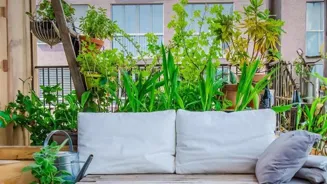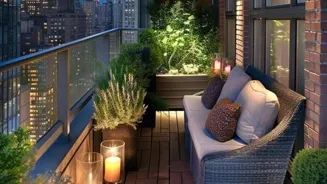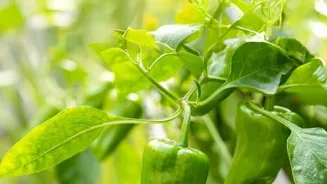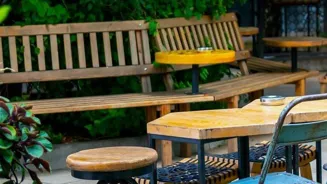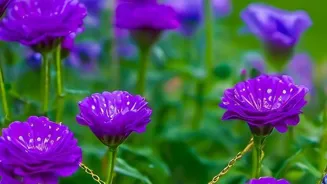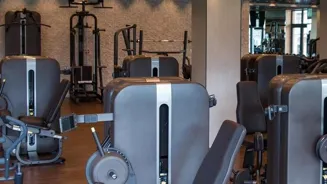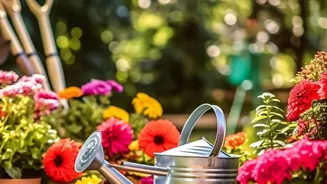Discover how to thrive with terrace gardening in urban areas! Learn essential tips for creating a green oasis. Read on!
Mumbai, October 26 – Tired of the concrete jungle and yearning for a bit of green
in your life? Terrace gardening is the answer, boss! In our crowded Indian cities, where space is precious, turning your terrace into a blooming oasis is not just a trend, it's a lifestyle.
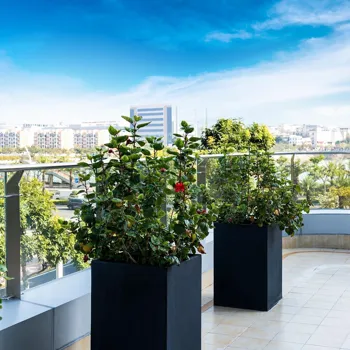
But before you rush out and buy every plant you see, hold on! Terrace gardening needs a little planning to make sure your green dreams actually come true.
Fear not, we've got six essential tips that'll transform you from a gardening newbie to a terrace pro, right from choosing the right soil to protecting your plants from those pesky pests. So, grab your gardening gloves, and let's get started!
We'll make sure your rooftop becomes the envy of the entire building.
Choose pots wisely based on plant size, weight, and drainage
Choosing the right pots and containers is more important than you think, yaar! Think about it – your plants will be living in these homes for a long time. So, you need to pick wisely. Always Choose pots according to plants, if you are planting a small plant, select a small pot.
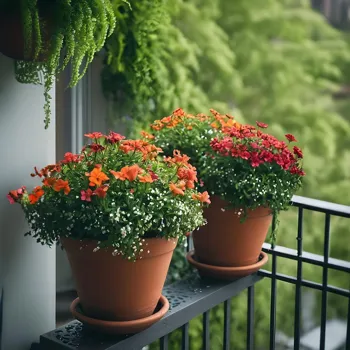
If you are planting a bigger tree, select bigger pot. Weight is also a major factor. Terraces have weight restrictions. Try to choose lighter materials, especially if you are working with a small balcony.
Plastic or fiber pots are better options than heavy terracotta ones especially if you are having a garden in the tower. Also, drainage is key! Make sure your pots have holes at the bottom to let extra water flow out and that your soil is well draining. Nobody wants soggy roots, right?
Plants need varying sunlight levels to thrive
Sunlight is like chai for plants – they need it to survive and grow! But not all plants love the same amount of sun. Some are sun-worshippers, basking in full sunshine all day long. Others prefer a bit of shade, especially during the harsh afternoon heat. Observe your terrace carefully.
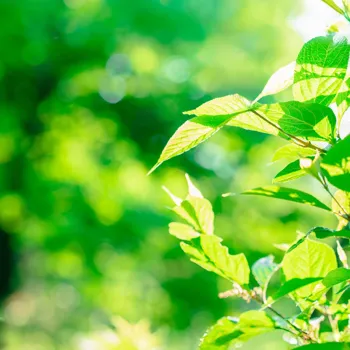
What areas get the most sunlight? Which spots are shadier? Once you know your sun situation, you can choose plants that will thrive in those conditions. For example, tomatoes and chillies love a lot of sun, while leafy greens like spinach can tolerate some shade.
And remember, you can always move your pots around to give your plants the perfect dose of sunshine. Understanding the plant’s light is important than anything.
Water plants carefully to avoid overwatering and root rot
Watering seems simple enough, but it's easy to go wrong. Overwatering can be just as bad as underwatering, leading to root rot and unhappy plants. Stick your finger into the soil. If it feels dry an inch or two below the surface, it's time to water.
Water slowly and deeply, until you see water draining out of the bottom of the pot, It is very important to understand whether the plants need water everyday or twice a week and it would differ as per plants and weathers. Rainy season might require you to refrain from watering.
Also note if soil feels soggy, then stop watering.
Plants need nutrients from fertilizers & organic manure for growth
Your plants need food, just like you do! Soil alone doesn't always provide all the nutrients they need to grow strong and healthy. That's where fertilizers and organic manure come in. You can use a balanced fertilizer that has equal parts nitrogen, phosphorus, and potassium (NPK).
You can also try a variety of organic options such as compost, neem khali, or cow manure. These improve the quality of the soil and give your plants sustained nutrients. Remember, feed your plants regularly during the growing season, but don't overdo it.
Too much fertilizer can burn the roots and harm your plants.
Healthy gardens face bug problems; neem oil and beneficial insects help control pests
Even the healthiest gardens can face bug problems. Pests like aphids, mealybugs, and whiteflies can suck the sap out of your plants, leaving them weak and unhealthy. But don't worry, there are ways to deal with them without resorting to harsh chemicals.
A simple solution of neem oil and water can work wonders to keep pests away. You can also encourage beneficial insects like ladybugs, which eat aphids. Regularly inspecting your plants for signs of pests is important. The earlier you catch them, the easier they are to control.
Protect terrace garden from wind and rain for plant safety
Terrace gardens are exposed to wind and rain, especially during monsoon. Strong winds can damage delicate plants, so it's important to provide some protection. You can use windbreaks like trellises, fences, or even other larger plants to shield your garden from the worst of the wind.
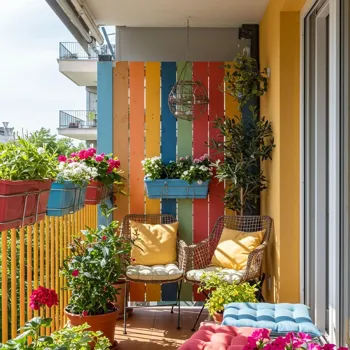
During heavy rains, make sure your pots have good drainage to prevent waterlogging. You can also move more fragile plants under a covered area to protect them from the downpour. Weather protection is very important, so keep these things in mind!
